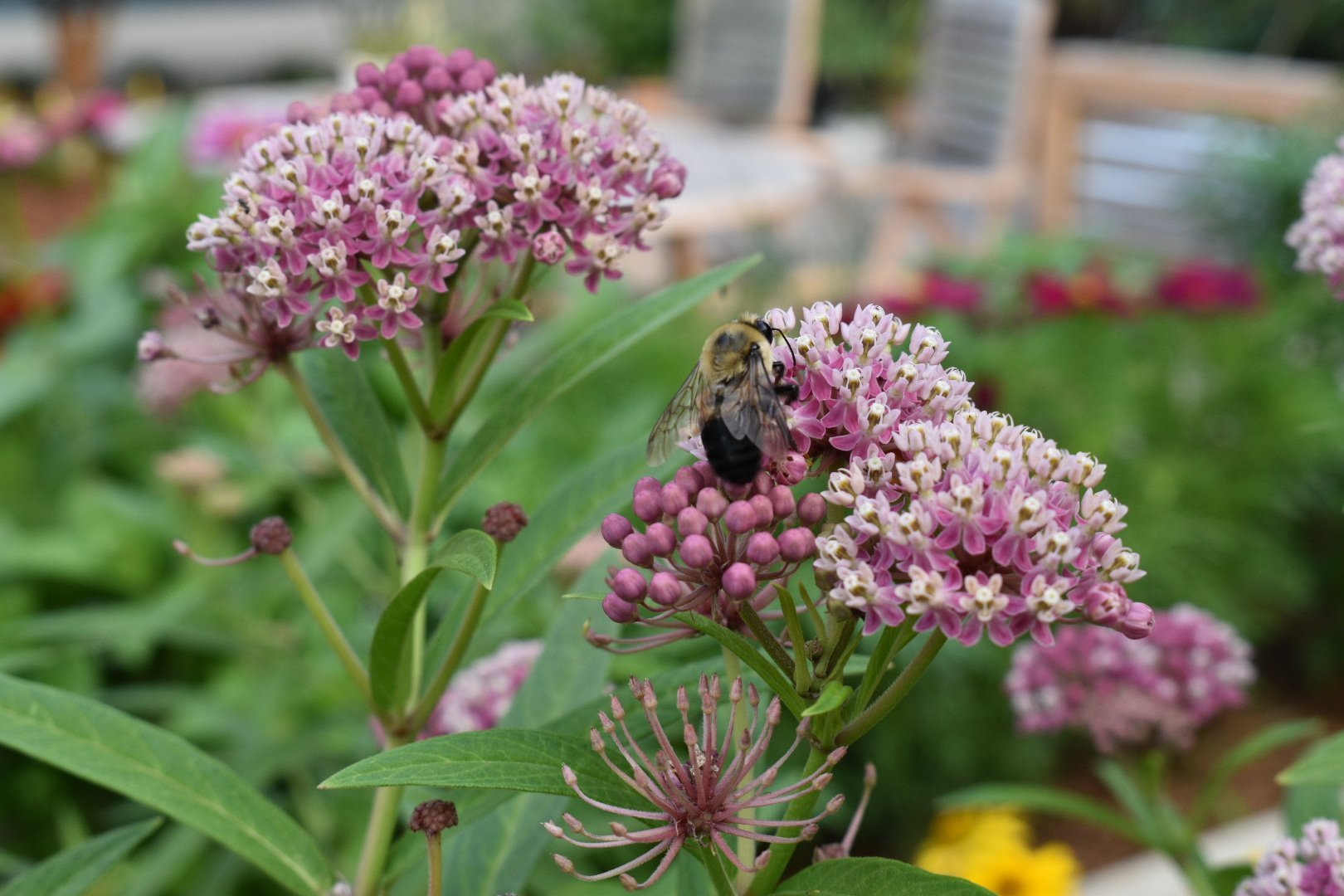Sydney McMillan is passionate about sustaining native landscapes that are both regenerative and beautiful. So it’s only fitting that she serves as Our Land Organics’ Earth Steward Crew Leader. Sydney brings a wealth of knowledge and an eye for detail to all our land care services.
To celebrate Sydney’s contributions, we asked her about the value of pollinator gardens, tips for native landscape maintenance, what it means for a landscape to be “regenerative,” and more. We hope you enjoy her reflections on the importance of sustainable landscaping.
Our Land Organics’ Earth Steward Crew Leader, Sydney McMillan
What drew you to native landscaping?
My background is in sustainability with a degree from the University of Cincinnati in Environmental Studies. Bringing sustainability to clients' homes through beauty and function is something that has always drawn me in. People who are surrounded by ecologically vibrant gardens and are in tune with sustainability are more likely to practice it at home and in their everyday lives.
Why do you choose to work for Our Land Organics?
OLO chooses to follow the most environmentally conscious path in regard to land management, plant selection, soil health, and general pleasing aesthetics. When it comes to landscaping, not many companies in Cincinnati practice most if not any of these principles.
The spaces we create are not only beautiful, but mend a critical tier of our ecosystem that all of us heavily rely on. Without our faithful pollinators, our lives would be very different. I love acting as a hands-on aid to such an important issue.
“I value watching patches of life pop up around my city.”
What do you value most about working as an Earth Steward?
I value watching patches of life pop up around my city. Areas that are otherwise ecological deserts of lawn, sterile shrubs, and water-intensive systems turn into something that gives back rather than takes.
Since becoming an Earth Steward, what is something that has surprised you?
I have been surprised by the amount of people who want things to be better. For an area of the country that places high value on landscapes that look like their neighbors’, there has been far more interest in our work than I originally thought. From young home owners who are engaged with environmental issues to recently retired grandparents who bought entomologist Doug Tallamy’s book on conservation in gardens, there has been interest across the board.
A well-tended native landscape elevates form and function. Native landscapes don't have to look "messy". Here, tidiness and ecological value go hand in hand. (Our Land Organics design & installation)
What do you wish more people understood about the work involved in stewarding a native landscape?
That you can have a beautiful garden that doesn’t look “messy.” You can have a well designed, structured landscape that looks intentional and well maintained.
Many people associate native gardens with a lawn or landscape that has gone rogue. However, there are experienced designers and horticultural experts here to help and who understand exactly how plants grow together in a landscape over time.
“A regenerative landscape’s intent is to heal and restore.”
You are passionate about creating native landscapes that are both regenerative and beautiful. In your view, what does it mean for a landscape to be regenerative?
A regenerative landscape’s intent is to heal and restore. By the time the landscape is finished being installed, it should be far more functional than you found it.
Over time, the soil should be better; the garden should be feeding beneficial nutrients to insects; it should be consuming less water as well as managing excess water; and it should be housing biodiversity.
Traditional landscapes are a black hole for our money and valuable resources. Investing in a regenerative landscape is a wise choice.
Native groundcovers defend against weeds and create a calming, cohesive aesthetic. (Our Land Organics design & installation)
What are some of your top tips for maintaining a beautiful native landscape year-round?
In order to maintain a beautiful landscape year round, make sure you select a plant palette that demonstrates a wide seasonal interest. Not only will you have something blooming all year (or close to it), but there will be a constant source of food for beneficial insects.
I also recommend implementing a groundcover layer in your garden to battle weeds. This layer of your garden is often overlooked and comes in handy especially during the hot summer months where weeding feels extra challenging. Sedges, ferns, and violets are a few of my favorite groundcovers that fill this niche underlayer.
Like other milkweeds, Swamp Milkweed offers sustenance to a wide range of pollinators.




